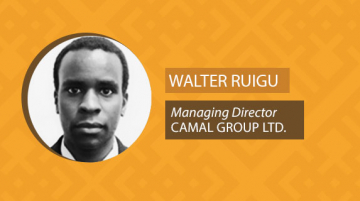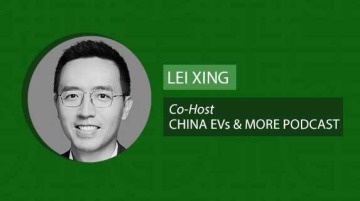
The electric vehicle (EV) sector in many African countries faces critical challenges, slowing down the adoption of electric mobility.
Some of these challenges are intra-African trade barriers, which make it hard to do cross-border trade. This means that while countries in Europe have it easier moving goods between them due to the harmonization of their trade regulations, there are no similar practices across the African continent.
This inconsistency is costing all trade sectors, including the nascent EV industry, which is seeing policies being developed sometimes to catch up with the innovations.
In this episode, the discussion highlights how tariff walls, customs friction, and inconsistent standards hinder the movement of electric vehicle components and finished products across borders. The conversation also explores the role of the African Continental Free Trade Area (AFCFTA) in reducing these barriers, the impact of currency conversion on trade, and the challenges of human capital movement.
Samuel Kamunya, the Head of Business Development & Enterprise at BasiGo joins Njenga Hakeenah to share insights from experiences related to the electric bus assembly in Kenya and Rwanda, emphasizing the need for harmonized policies to foster growth in the EV sector.
The key takeaways highlight how intra-African trade barriers increase costs and hinder innovation, posing a significant challenge to EV adoption. There are also insights on currency conversion and the impact on profitability of cross-border trade as well as visa requirements and the benefits that would come with harmonizing trade policies and enhanced regional integration.
Show Notes:
- The China-Global South Project: Chinese EV Tech in Kenya’s Mass Transport: The BasiGo Story by Njenga Hakeenah
- The China-Global South Project: Africa’s EV Game-Changer: Kenya Partners with China’s CATL by Njenga Hakeenah
- electrive: BasiGo delivered 100 electric buses in Kenya and Rwanda by Chris Randall
About Samuel Kamunya:

Samuel Kamunya serves as the Head of Business Development and Enterprise at BasiGo, a pioneering Kenyan startup accelerating electric mobility through locally assembled e-buses. He has been instrumental in forging partnerships with Chinese suppliers, including BYD, BLK, Zhongtong, and Higer, to drive technology transfer, diversify the supplier base, and scale production capacity. Kamunya has played a pivotal role in expanding BasiGo’s market presence by working with public service vehicle operators like Kenya Bus Service (KBS), overseeing the rollout of e-bus fleets built at Kenya’s first high-volume EV assembly line in Thika. His efforts are aimed at making EVs more accessible through strategic financing models and seamless deployment. He is also a vocal advocate for sustainable transport.
Transcript:
NJENGA HAKEENAH: Hello and welcome to the Africa EV show, the show where we track the pulse of electric mobility across the continent. In this episode, we dive into one of the most overlooked but critical challenges shaping the future of electric vehicles in Africa, intra-African trade barriers. As more African countries push for more activity in their borders or in their countries, local assembly, importation of electric vehicles and battery manufacturing, a central question arises and this is; how easy is it to move EV components across borders or even the vehicles themselves?
We’ll explore how tariff walls and customs friction are inflating costs, slowing innovation and keeping entire regions locked out of the EV shift. For landlocked nations, the lack of seamless trade with their coastal neighbours is more than a logistical headache. It’s a roadblock to clean affordable mobility.
We’ll also look at whether the African continent, a free trade area, the AFCFTA is delivering on its promise. Is it still breaking down these barriers or are national interests still getting in the way? And also how regional blocks like ECOWAS, SADC and the EAC could be doing much more to harmonise EV policies and why coordinated tariff reforms might be the missing key to unlocking Africa’s EV future.
We are joined by Samuel Kamunya, Head of Business Development at BasiGo. They were the pioneer bus assemblers in Kenya and so now he joins us and he’s going to give us a little bit of the challenges that they are experiencing, especially with the tariffs that we have just mentioned. Samuel, welcome and good to have you.
SAMUEL KAMUNYA: Thank you very much Njenga and it’s always a pleasure to talk about our story and the evolving stories of EVs around Africa.
NJENGA HAKEENAH: Nice, now I know that you are in the middle of this because your buses go to Rwanda and Rwanda is a landlocked country but the fact that Kenya and Rwanda do not have harmonised policies on EVs, those are some of the things that we’ll be discussing but how do intra-African tariff barriers affect the flow of EV components and finished electric vehicles across borders and what are the implications in terms of cost and scaling the markets?
SAMUEL KAMUNYA: Thank you very much again. We can see now we are a regional company because we have presence in more than one country, so we are currently in Kenya and in Rwanda, Kenya being where we pioneered the electric bus technology. So the whole idea of organisations or outfits that have regional integration, continental integration, global integration, when you talk about the East African community, the SADC, ECOWAS, talking about our continental that currently acted the intra-Africa trade preferential, global looking at the AGOA for example, the premise behind the formation of all these outfits is to reduce the barriers to trade.
There are very many areas of collaboration that countries might be looking to manage each other but the biggest collaboration between countries is generally around trade. So barriers to intra-African trade, the first one is the tariffs, the taxing, the customs and the tax tariff, so is there harmony between countries, are there mutual agreements, are there is it ideas that have been discussed before. Secondly you look at cross-border movement, is the cross-border movement as easy or as seamless or as attractive to be able to allow trade because what you might have in mind, yes you might have a preferential tax rate by exporting goods or services to another country, however the movement of goods between those countries already is already a chocker block and a barrier to trade.
So when you look all around at why intra-Africa trade barriers, the way already we are calling them barriers, it means something is not yet aligned. Do we have alignment of taxes, do we have alignment of tariffs, do we have alignment of immigration movement between goods and people across barriers, do we have alignment of currency, do we have alignment of the workings or the standards of goods between the two countries. So that is what will really bring the barriers to intra-Africa trade, the tax regime, the movement between borders, the immigration laws, the standards and also the currency between the two countries.
NJENGA HAKEENAH: And currency also plays a role because it has to be converted into dollars before you can do any business, right? And you lose value through those conversions.
SAMUEL KAMUNYA: You can imagine we have around 45, 46 countries in Africa, 54 and none of them share a currency. Intra-Africa trade is supposed to bring this harmony and we have adopted the USD which is not a bad thing but it’s not a currency that ideally would be there, the trading currency in each and every country in Africa. So this is also a challenge and that conversion always.
As a company, we have received funding via USD, converting them into Kenya shillings, moving goods from Kenya to Rwanda through Rwandan francs, then doing our trade in Rwanda, converting the currency back into USD so you’re able to pay back your investors. You can see how currency already affects quite a big chunk of transactions between countries and trade among countries.
NJENGA HAKEENAH: Yes and I think in terms of lost value when you convert a dollar in Kenya then you go to Rwanda and convert whatever you converted through that chain the value is getting lost and so that is a barrier that hinders the growth, not only in the EVs also by the way but also in terms of every other aspect that could be business. But also something else, Samuel, that I would be interested in knowing is that business cannot happen without people and so when we talk about these intra-African barriers there are non-tariff barriers as well in that I cannot go to a certain country without a visa yet we are on the same continent and we want to do business. How does that affect you especially in this space which is very nascent, which is very new?
SAMUEL KAMUNYA: In point number two in the barrier that is affecting intra-Africa trade I brought about movement between borders, between goods, services and human capital and also when we say about the tax regime or the tariffs between two countries you would ideally expect let’s say because you’re a foreigner or you know I’m a Kenyan going to Rwanda I’m a foreigner that doesn’t change at all. However, the integration between the East African communities will harmonize very many things, goods, many pricing agreements will harmonize very many standards. However, when we come to harmonizing the tariffs around human compensation in between the two countries is not as you would expect.
The assumption would be that when we are talking about having a uniform VAT across the East African countries would be for goods. The assumption would be if pairs one in Kenya is at 30 percent how maybe you’ll expect that kind of conversation will be Uganda is trying to get 30 percent, Tanzania is getting to 30 percent for even the East African community members. However, that’s not the case.
I understand sometimes it’s the way countries protect themselves against the influx of expertise that they already have. However, some of the expertise are rare. In Kenya, we have very many expertise that would not be possible to find locally if we do not adapt foreign employment.
First example is what we’re talking about EV technology. EV technology is a very new technology in Africa not even in Kenya as such. However, the countries that have gone first that have been ahead in the years would want to transfer that knowledge to other countries both regional and outside the region.
However, those labor laws around human capital some of them are prohibitive. It’s okay. It’s countries protecting themselves against knowledge that you already have.
However, there should be exceptions. I believe not only exceptions to adapt that human capital but also exceptions around them taxing that capital that is rare or not available in the country of origin. Even Kenya we do not have a battery engineer and we are importing a battery engineer from America, from China, from UK.
I believe there should be special exemptions for talent that is rare, talent that will help spur growth maybe until a certain time when you’ve already transferred the knowledge to the local human capital. Then after that, we can allow the set a taxing regime around that human capital to work. What you see in other countries is sometimes expatriates as we call them have lower taxes around their compensation to help them, to incentivize them, and to encourage them to pass that knowledge or to bring investments into those countries.
So, it’s a conversation that should happen between countries. However, as we work into adopting a harmonized tax regime around goods and services also around the human capital I think is somewhere we need to include in our conversation into Africa trade because border control, border movement is also a big thing around promoting EVs around the continent.
NJENGA HAKEENAH: All right, because you’re already in Rwanda. When you’re doing business there, it’s not the same way that you do here in Kenya and there are challenges because it is a landlocked and isolated African country. And so, what are the challenges to accessing affordable EV technology in Rwanda bearing in mind everything that we’ve spoken about the trade restrictions or limited customs and harmonization with Kenya because most of Rwandese stuff passes through Kenya.
SAMUEL KAMUNYA: The aim of every business is to move towards becoming a growing concern that the business will exist, the business or the initiative will exist in perpetuity. So, when you’re faced with the barriers in another country, when you’re faced with barriers that would ideally want to seem like they’re stifling the growth of a company, you sometimes look at them as opportunities to be able to grow because you’ve made a decision to grow EV in one country. So, you actually have to work to make sure it succeeds as opposed to dwelling so much on the fact that it’s a barrier.
But we are seeing that. So, when you’re moving from Kenya to Rwanda, you first ship from China or from the country of origin, then you move by road all the way to Rwanda through Tanzania, Uganda or sometimes to Uganda only depending on the route you’re using. And in every border control, it moves, it works.
However, when you look at what happens in the goods, the movement by road between Kenya and Rwanda ideally is around four days. But from the moment the goods land in the country of Kenya to the moment the goods enter Rwanda, you’re looking at almost 14 days. Why 14 days?
Because ideally still Kenya not being the country where the goods are settling in is still some taxing activity, some customs and border control around the ports that would delay the movement of goods. And you see in every business, you try to reduce the movement of goods from the manufacturer to the end consumer within the shortest time possible. So, that is one challenge.
Challenge number two is also what we are talking about human capital. You would want to ship some of the human capital from Kenya to Rwanda, go and pass that knowledge and then return them back to their country which is Kenya. So, it’s not as easy as it looks like around the region to move capital between countries, especially when that human capital is from the region actually.
It becomes quite a little bit difficult. But we are seeing slowly there are conversations around intergovernmental organizations to try and harmonize that process. So, you may find that a Kenyan would be able to only visit their country, be able to pass the technology of the transfer as a contractor, try and make sure that the knowledge has been passed and then go back to the original country, which is what we look for as a company, to build local capacity as much as possible.
When you look at the other areas that Rwanda has succeeded, now talking on both fronts, is that we manufacture the electric buses in the country. And we manufacture them in Kenya because we want to reduce the cost of these buses. However, going to Rwanda, the regime, the tariffs around EVs are favorable such that it would not make business sense to manufacture buses headed for Rwanda as opposed to directly importing them because they do not attract taxes in Rwanda.
So, Rwanda becomes a very great driver of electric bus investments in that country. They have preferential tariffs in electricity that will support EVs. And when you look at that, it makes the country more favorable in terms of costs of charging as opposed to maybe slightly in other African countries.
So, you are every day faced with opportunities to try and start EVs in very many countries on your approach to government, by investors in other countries. However, when you look at the things, the benefits that you are enjoying in Rwanda, very few countries are able to match those benefits. So, Rwanda becomes also a very good place where EVs can thrive easily.
NJENGA HAKEENAH: And I think with the favorable taxation conditions and regimes in Rwanda, EVs become more affordable, right? They become more affordable.
SAMUEL KAMUNYA: One of the biggest barriers around EVs everywhere in the world is the upfront cost. So, when you reduce that upfront cost significantly by removing taxes and levies and duties on EVs, you’re increasing adoption. And even now, the local economy is able to adopt that technology very easily.
NJENGA HAKEENAH: Our other neighbor, Ethiopia, is doing amazing things when it comes to electric vehicles. So, we just wait and see which other African countries will adopt such a stance, regardless of how much they lose in terms of tax revenues. Let’s see who else will be jumping on that boat.
But to what extent is the AFCFTA helping reduce tariffs and non-tariff barriers that currently hinder the growth of cross-border trade in EV supply chains?
SAMUEL KAMUNYA: Yeah. So, when you look at especially around EVs, very little technology, very little raw materials are in Africa to allow the importation of building materials or manufacturing materials for EVs between African countries. Most of these materials in Africa moves outside the continent, value-added in countries where OEMs exist, and then comes back to Africa as finished goods.
So, basically, we import CKDs from OEMs around the world, however, not in Africa. What we are seeing now is these OEMs are setting up factories and manufacturing plants in Africa. Egypt is one of the countries where we have an EV company.
Soon, there is news around the movement of a big OEM moving into Ethiopia because of just what you said earlier. So, when you look at intra-Africa trade, where does it apply? Africa unity, although the SADECs, the ECOWAS, the East African community have negotiations around harmonizing exchange rates between countries, harmonizing trade tariffs, especially for goods that will drive the growth to make Africa leapfrog into a big manufacturing or to a big intra-trade continent.
The conversations are there, however, they have not yet actualized or materialized to be able to see that the movement of goods between all African countries altogether, especially around EVs, is low-cost. Conversations are there to mirror what Ethiopia, what Rwanda, and what Egypt would want to do, but we are able to have a harmonized trade tariff, movement of particular goods, and the conversation is around EVs also, to make sure that that component that will drive industrialization in Africa is attractive within Africa to make sure that, number one, it is addressing climate change, number two, it is growing industrialization, and number three, it is bringing revenue from consumption of power that has been produced in Africa. Africa has a lot of power, most of it is being underutilized, and one of the drivers towards the consumption of all the power in Africa is EVs.
So, there is a conversation, but as we speak, it’s country by country by country. So, from a continental area, we are not yet there, but usually as countries, we are there and moving towards making it regional and then continental.
NJENGA HAKEENAH: Nice, and I know that when it comes to settling payments, there is the Pan-African payment system, PAPS. They have started using it in different countries, whereby if you make your payment in Kenya shillings, wherever it is, whether it’s Rwanda or Ethiopia, it is settled in the local currency. So, it’s a step towards making African economy much easier to trade in, and I think when it comes to the fact that we do not have to rely on foreign currencies, overseas currencies, then it will be much better for an African doing business in Africa.
But still, we have to open the doors because we have to make travel across countries and regions much easier. But how do inconsistent standards and high import duties across African countries slow down regional EV manufacturing ecosystems and discourage foreign investments? I know you have said Rwanda is good for business because you can be able to do a lot there without the taxation, but how is it in other different countries?
SAMUEL KAMUNYA: When you look at the different countries, like now when you go to, let’s start with East Africa, you’re talking about when you’re importing fully built kits in Kenya, they’re attracting import duty, excise duty and VAT. Then you go to Rwanda, when you’re importing an EV, no duties at all. So, you can see that difference.
And at the same time, when you look at Uganda and Tanzania, we have a different VAT rate for the two different countries. I think we’re at 16, 14 and 18. When you move towards any other country in East Africa, none of the countries mirror each other around taxing, none.
Every country is in itself. Every time you’re setting up or you’re planning or you’re forecasting to set up in any new country, you have always to model differently. However, if you had harmonized or a consistent standard between the three countries, when you’re going to pitch for investment for every country, you have a different pitch deck because there are different electricity tariffs in all those countries.
There are different trade tariffs in all those countries. There are different standards of buses in all those countries. So, that inconsistency might prohibit faster growth.
So, you can imagine if in Kenya, we’re already manufacturing a bus in Kenya and that bus might not be ideal for Tanzania. That bus will not be ideal for Rwanda. That bus will not be ideal for Uganda.
Our buses in Kenya are so different from the buses in Rwanda. You go to Tanzania, we are talking about Tanzania now internally as a company. The buses in Kenya are different from the buses in Tanzania.
So, like you would see maybe outside the continent, movement between the European Union is one standard. Internally, both within the countries like movement from Italy to France to Germany to Switzerland, one standard will move across those different countries and that has helped grow and stabilize the European Union. If we adopted the same as a region, East Africa, as Africa, that will also spur growth because a product made for Tanzania would be a product fit for Rwanda, would be a product fit for Kenya.
So, that is something we need to look at because it also reduces the delivery time. So, you have an assembly line that has five products, five electric buses for five different countries as opposed to one line that you could accelerate the growth and produce one bus that will fit all the countries all together. The inconsistency is big.
So, what it does, it delays lead times, it delays growth into the new markets and it delays investments across the country, yes.
NJENGA HAKEENAH: All right, and you’ve been in the transport business for a long time and I just want to ask like when we are importing vehicles from maybe Japan or the US or whatever, like for instance buses, you have mentioned that manufacturing it’s one line. So, it’s one similar kind of bus. From your experience dealing with these buses in the transport industry, does Japan have to customize buses for every country or do they just come as they are and then here we go, wherever?
SAMUEL KAMUNYA: So, what you will notice is most of the buses around East Africa and more than 90 percent of PSVs are locally assembled because still that standard is not the right one for Africa. So, when you’re importing used vehicles from Japan, rarely that’s a portion of which the importation is around PSVs and for that the buses is very little because the standard is also different in African countries and in the So, that’s why you’re seeing most assemblers of PSVs are based locally. When you go to Tanzania, you’ll find the Tatas are there, they’re doing that assembly there.
When you go to Uganda, you’ll find the Kira Motors are doing their buses there locally. When you come to Kenya, you have Pasigul, you have the ordinary ICE vehicles, the Isuzus and the Mistubishis doing assembly locally in the country because you don’t have a blanket standard for the region. So, every country would ideally push for PSVs and also given the sensitive nature that PSVs transport people, the standards are quite high and quite regulated, not just allowing imports around the PSVs.
NJENGA HAKEENAH: Okay, it makes sense then. It does make sense. All right, now I understand why AVA, I think it’s KVA, the assemblers in Kenya, Isuzu, Mistubishi and whoever else, they have some interesting, you know, the way their buses look.
You can tell there’s a lot of uniformity. You wonder, is there no creativity in this sector? But it’s the requirement of the policies, you know?
SAMUEL KAMUNYA: Yes, we have standards. We have the Kenya Bureau of Standards, KES 372, KES 1550 that regulate how we should be able to fit out a public service vehicle.
NJENGA HAKEENAH: And could regional blocks like IKOWAZ, SADEC or ESC do more to harmonize EV-related trade policies? And what role can coordinated tariff reforms play in unlocking broader continental adoption of EVs?
SAMUEL KAMUNYA: Like every other organization, like every other association, the work is to lobby, is to drive the agenda of the members first of all. By the time Kenya moves out and says we want to have an agreement between Kenya and Egypt, between Kenya and Senegal, that is West Africa, North Africa. First, as East African community, have we agreed?
Are we harmonized? What would be more compelling is if Kenya went to negotiate for a trade between Kenya and Egypt. And for an example, maybe we produce EVs in Kenya, let me talk about that.
This is how EVs look like. And for example, maybe we know Uganda is doing EVs and maybe let’s say even example Tanzania is doing EVs. So Kenya has gone to negotiate to deliver EVs in Senegal or Egypt.
Uganda has gone separately to do the same. Tanzania has gone separately to do the same. So you have one country approached by three different countries with three different products, three different standards.
Imagine we merged that as East African community and said our export standard for EV is this one. We are going to negotiate this one standard to be pushed to that country or that regional trade area. So you’re going to negotiate as East African community.
Then you move from East African community, you say now let’s go to SADC. All of us have a standard where we are pushing one standard. So the continent is poised for choice and we are able to satisfy the demand because all of us are producing one product, one standard and maybe even we have agreed on the price because the late fees and the taxes are uniform.
So when you’re talking about these organizations, ideally what they’re supposed to do or what they push for is to lobby to be able to be giant trading blocks so that you are able to trade with other regions as a block. When you look at the commercials of this Africa, that is what we do. We are selling our sugar as COMESA.
We are buying sugar from Komesa, not from that one country. We are buying sugar from Komesa and sugar from SADC. We are buying maize from ECOWAS.
So you can see that makes more sense. So if South Africa, Botswana, Namibia are in SADC, which means me buying from South Africa, me buying from Botswana, me buying from Namibia, I have no doubt that what I am buying is the same and the same price and the quarters extended to Kenya are the same by SADC members. So that harmony to be able to lobby as a block, to be able to lobby as a region really comes in handy when you’re looking for the bargaining power and be able to look as attractive as a region because not one region will be able to satisfy the whole continent.
So they are able to move in between Kenya, Tanzania, Uganda and Rwanda to be able to get what they want, the East African block.
NJENGA HAKEENAH: All right, thank you so much Samuel Kamunya. He is the business development manager at Basigo, one of the pioneers in bus assembly in Kenya and electric buses, not ice buses and also the manufacture for Rwanda. So if you go to Rwanda, you will find buses that look like those you left in Nairobi.
For you guys, that’s it for this episode and I know you have stayed with us this far because you’re clearly invested in Africa’s electric vehicle future. We have looked at how tariff barriers, inconsistent standards and fragmented customs are affecting EV adoption across the continent, but we have also learned that there has to be a lobbying that has to continue because the stakeholders in the sector have to make sure that there is standardization. For instance, in East Africa, we have the East African community.
If everything that is coming from East Africa is the same, then you know what you’re buying, wherever you are buying on the African continent. But then with the African continental free trade area, that is the offering some hope. There are still some questions that remain on whether enough is being done by those who are in these offices, whereby we have to be having negotiations and conversations to ensure that we cut down on tariffs, not only in terms of taxes, but also the movement of people because goods cannot move without people.
Of course, we know that the Chinese EVs are playing a huge role in this space. Let’s see what happens next because there’s been a lot of skill transfer and knowledge transfer. For instance, even Bicycle, like we were talking about, they started by importing FBUs from China, but now they are locking and assembling.
Let’s see how the trade will be playing out as we go along. Until next time, my name is Njenga Hakina and this is the Africa EV Show. I do look forward to seeing you again soon.
Do enjoy and see you on the other side.











